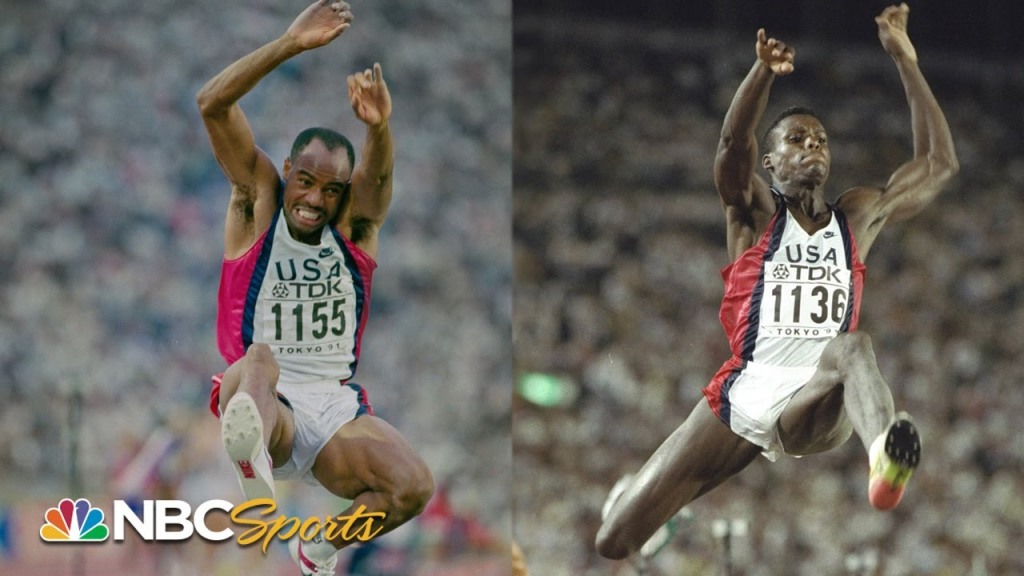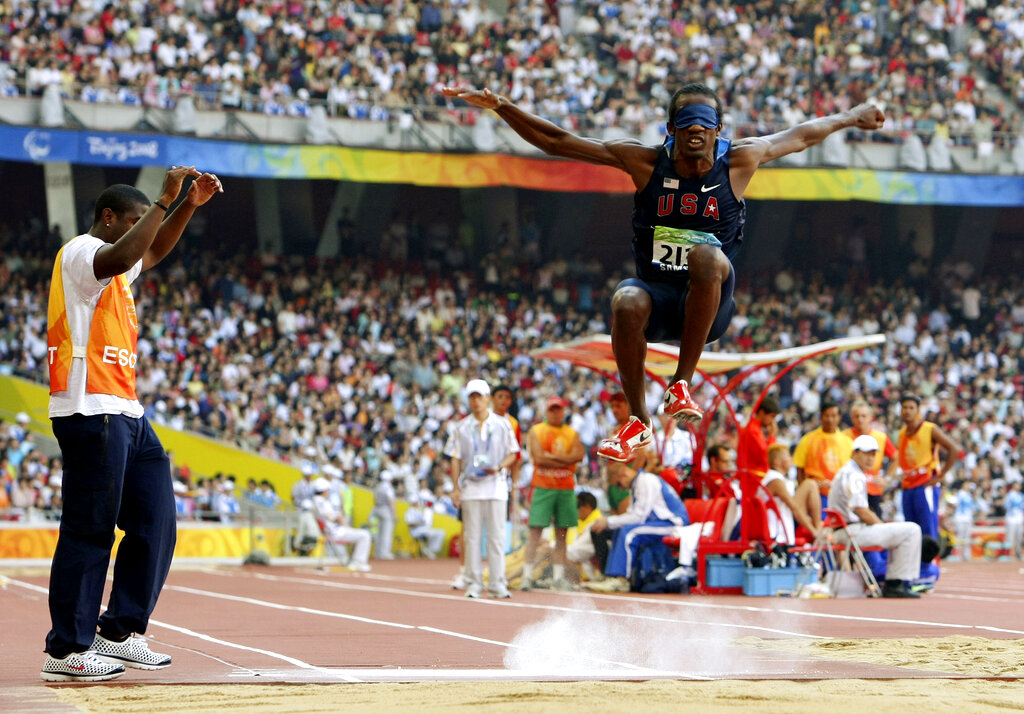Today, 30 August 2021, marks the 30th anniversary of Mike Powell’s other-worldly long jump duel with Carl Lewis at the 1991 World Championships in Tokyo. In that competition, Lewis and Powell traded breaking Bob Beamon’s legendary 8.90m world record from the 1968 Mexico City Olympics, with Powell emerging as the victor by producing the still-standing world record of 8.95m on his fifth round leap, besting Lewis’s 8.91m wind-aided mark from the fourth round.
There will be a Zoom call later today featuring Mike and many other luminaries, including a host of history’s best jumpers to commemorate the anniversary.

In light of this historic remembrance, I turned on the coverage from the Tokyo Paralympics this past weekend and watched the T11 long jump final for blind athletes. The lineup featured the USA’s now 5X silver medalist Lex Gillette. What I saw both intrigued me and made me wonder.
Due to the T11 athletes’ lack of sight, the rules governing their competition differ slightly from sighted competitions. Notably, the athletes had minders standing at the takeoff location clapping their hands and calling out repetitive phrases or words to give their jumpers an aural indication for their takeoff. But Paralympic rules also accommodated the athletes in another way.
Rather than having the blind athletes takeoff from behind a narrow board inserted on the runway, like in sighted competitions, T11 athletes were required to takeoff from within a wider, chalk-dusted area. Their jumps were then measured from their actual takeoff position, identified by the mark in the chalk, to their actual landing place in the sand pit. Their jumps were not measured from a one-location-fits-all board as in sighted jumping.

This chalked-area takeoff method allowed officials to measure the actual distance achieved while eliminating the often large distances sighted athletes miss out on due to how far behind the board they take off.
Until this pandemic cycle, the Olympic motto was Citius, Altius, Fortius, Latin for Faster, Higher, Stronger. This year in Tokyo, officials understandably added the word “Together”. But read to the original words again, faster, higher, stronger. It does not say, faster, higher, stronger “but only taking off from behind a narrow, arbitrarily designated board”.
Point being, what is the competition attempting to ascertain? If it’s who can jump the farthest, measure the damn jump from where the athletes actually take off, ala the Paralympic T11 competition.
This isn’t archery, an aiming contest, where hitting the target is the goal. It’s called the long jump and the triple jump. A wide, chalk-marked takeoff box would provide a jump-specific starting point and allow athletes to concentrate all their energy into flinging themselves as far as they could rather than dialing back to hit an arbitrary board.
Haven’t we all seen or wondered how many truly long jumps, whether in the long or triple jump, weren’t measured due to a close foul? Apocryphal or not, Carl Lewis was said to have jumped over 30 feet once on such a bare foul. And Mike Powell’s own fourth round jump in Tokyo ‘91 was a beast, but unmeasured due to a microscopic foul.
Similarly, for the high jump, if somebody wants to do a round-off and three back flips as an approach before launching off both feet in order to generate lift and height, have at it. Let’s see how high these gymnasts can fly. As long as they don’t insert a springboard under the runway, like gymnastics does in the floor exercise and women’s vault, who cares how they get up as long as it’s off their own power?
Today’s high jump is as much about who has the best technique as it is who can jump the highest. I remember the great Jackie Joyner-Kersee telling me how her coach/ husband Bobby used to say, “you have to jump 1.83m just to get over the bar at 1.80m because you have such flat flop technique.”
Athletes in 2021 don’t use the same tracks, spikes, implements, or timing devices that their predecessors did. As technology advances, the sport has always followed. They may be early adapters or late, but eventually officials accede to new technologies.
We have the capacity to actually measure the greatest long and triple jumps. Why don’t we? Is it another case where, “well, this is the way we’ve always done it?”
Perhaps the most salient argument is that World Athletics is already experimenting with the field event’s formatting this year by having the first five rounds determine the three finalists with the sixth round jump or throw deciding the podium positions, whether or not that jump or throw is the longest of the day.
It’s all just a game and entertainment, innit? Why not keep the experiment going? The Paralympics have shown you how to do it.
END

Great post and argument, Toni. You are on fire. I think your last three posts has been some of the best. Keep it up!
*have* – I wish I could edit my commments.
*have* – (I wish I could edit my comments so that I don’t appear illiterate.)